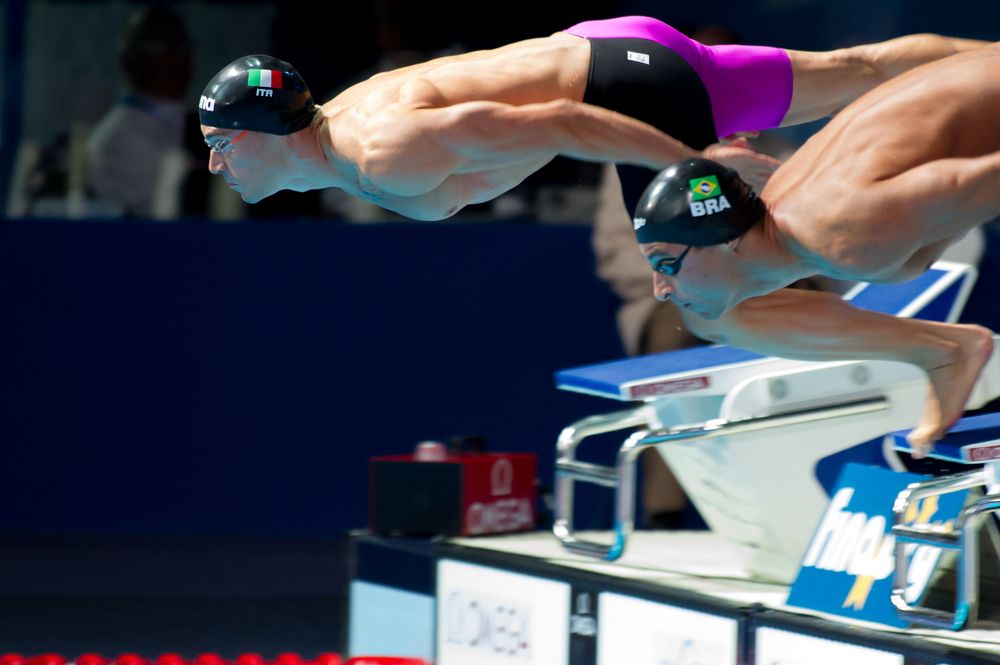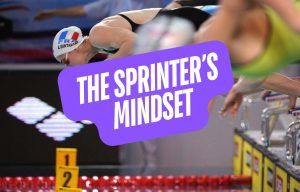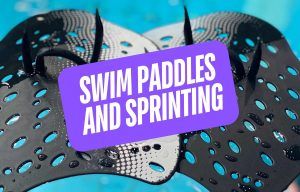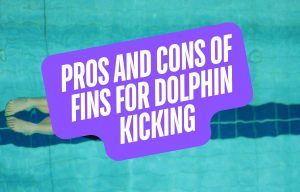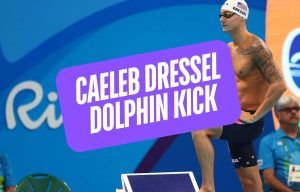Having a powerful core will make you a better, stronger swimmer. Here is a quick list of my top 6 core exercises for swimmers.
The importance of core strength for fast swimming has become more mainstream over the past couple of decades.
Where at one point swimmers would be given a couple of sets of crunches after practice, now they are prescribed core workouts to improve all aspects of performance in the pool, including developing a faster underwater dolphin kick, a faster flip turn, and even a more explosive start.
Best of all? Adding core training to your regular dryland will improve your swimming speed.
A study with elite competitive swimmers (Karpinski et al., 2020) found that a six-week core training intervention significantly improved 50m freestyle time trial results.
When building a core routine for swimming faster, the objectives go beyond having that vaunted six-pack that is typical of the swimmer’s body:
- A strong core gives you a powerful platform from which you can pull, push and kick through the water.
- Helps you keep your body properly aligned in the water–your core helps you keep your hips high, reducing drag and making you more efficient.
- Doing core exercises will assist in keeping your technique together, whether you are going at a full-blast sprint, or are on the tail end of a long pace set.
A solid core routine is a great complement to the work you are doing in the pool and a properly designed dryland program that includes strength training exercises for swimmers.
Here are six beginner-friendly core exercises for faster swimming that will give you a rock-solid mid-section while also giving you more power and stability in the water.
1. The Plank.
Simple looking in nature, the plank is the best core exercise for swimmers because of its versatility, accessibility, and the limitless number of ways that it can be made more challenging as your core gets stronger.
The variations that can be done planks are endless. You can employ numerous different fitness aids to mix it up, including but not limited to – TRX straps, bosu ball, and swiss balls. Do front planks, side planks, two-point planks, shoulder-tap planks, freestyle planks, and so on.
For our purposes, we will stick to the old-school, straight plank.
How to Do It:
- Support yourself on your forearms and toes. Keep your elbows directly below your shoulders.
- Squeeze your abdominals and your butt to achieve a straight, powerful spine-line.
- Beginners should aim for a 30-second hold. Increase in time as ability allows.
- Your mid-section will try to sag towards the floor – don’t allow it! The point of the exercise is to keep your body in a firm line – including your head.
- Don’t forget to breathe.
2. Hip Bridges
This one might look very easy, but it is good for developing strength in your hip flexors, hamstrings, as well as your lower abdominals.
You’ll find that doing this exercise will also help you build deadlift strength, one of the key strength training exercises for competitive swimmers.
You can progress to using weights – either on a bar or holding a plate on your pelvis – and also use a swiss ball or a bench as a variation to the floor.
How to Do It:
- Get on your back, lay your arms down at your side.
- Keep your feet flat on the floor and raise your trunk towards the sky.
- Stop when you have achieved a straight spine-line. Don’t over-extend.
- Hold for a three-count, and slowly descend.
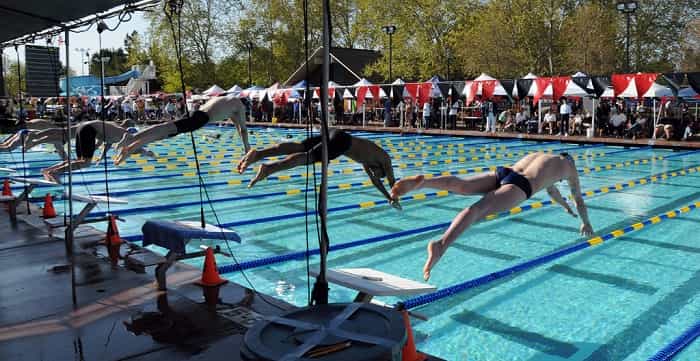
3. Superman
While you may feel more like a beetle who has rolled over and is stuck on his back as opposed to a super-hero, fret not, for this exercise is fantastic for developing scapular stability (i.e. developing and retaining good posture and helping ward off that pesky swimmer’s shoulder), your glutes and back.
How to Do It:
- Lay face down on the ground, arms straight above your head.
- Tighten your glutes and pull in your belly button.
- Lift your left arm while also raising your right leg. Hold for a three-count. Now do the same but with the opposite arm-leg combo.
- Don’t drop your arms and legs; you want a controlled movement throughout.
4. V-Sit Kicking
This one is a little more challenging. Depending on where you are currently at you may want to start out with basic flutter kicking on your back. This exercise is tough, as it will challenge your lower back, hip flexors as well as taxing your abs.
How to Do it:
- Sitting on the ground start fluttering your legs up and down. Focus on making small kicks – as close as possible to your actual kicking motion.
- Balance yourself and bring your arms above your head into a streamlined position. Your body’s natural inclination will be to roll backward – using your mid-section to stabilize your body so that this doesn’t occur.
- Enjoy 🙂
5. Cable Push-pull
One of my favorites – you will need a cable machine to make this work or a couple of stretch cordz. The push-pull is great for developing rotational power with your trunk, which is especially helpful for you freestylers and backstrokers out there.
How to Do It:
- Set up the cables; you can either do one up high and one down low (this more approximates the freestyle action), or position both cables so that they are chest high.
- With one hand pull, and the other push. Make sure to focus on the rotation of the trunk, and not using your arms to push/pull the cables.
Here is a video demonstrating the cable push/pull in action:
6. Russian Twists
If there is just one core exercise that sprint freestylers should do, it is this one. Why?
Because it does a couple of very important things that correlate directly to fast freestyle swimming:
First, it requires you to be able to move your upper torso in a rotational manner, much like you do with the arm movement in freestyle. Being able to rotate quickly with power and control is critical.
Secondly, your core works to keep your legs extended and from swinging wildly back in forth, which also simulates the stable hip position you need to achieve when sprinting. Letting your legs and hips sway and slide leads to an inefficient, cork-screwing freestyle that causes drag and leaks power.
How to Do It:
- Park your chlorinated bottom on the ground, raise your ankles off the ground, and lean back a little bit to balance yourself.
- Using a medicine ball, dumbbell or even without weight, turn your shoulders 45 degrees. Touch the mat with your hands. Now turn the other way. Repeat.
- Perform the movement with control, not allowing your legs to flop or slide around.
The Takeaway
The core exercises swimmers use should apply to whatever goals they have in the pool.
If you are lacking in rotational power, find that your technique falls apart quickly, or that your posture in the water is kind of stinky, implement a handful of these exercises regularly into your dryland program.
Use the core exercises that match your goals in the water, add them to your regular training routine, and take your core strength and swimming to new heights.
Happy swimming!
More Dryland Resources:
5 Dryland Exercises for a Faster Underwater Dolphin Kick. Michael Phelps perfected it, and now the rest of the swimming community is rushing to make the most of this weapon. Here is how you can strengthen your underwater fly kick on dry land.

